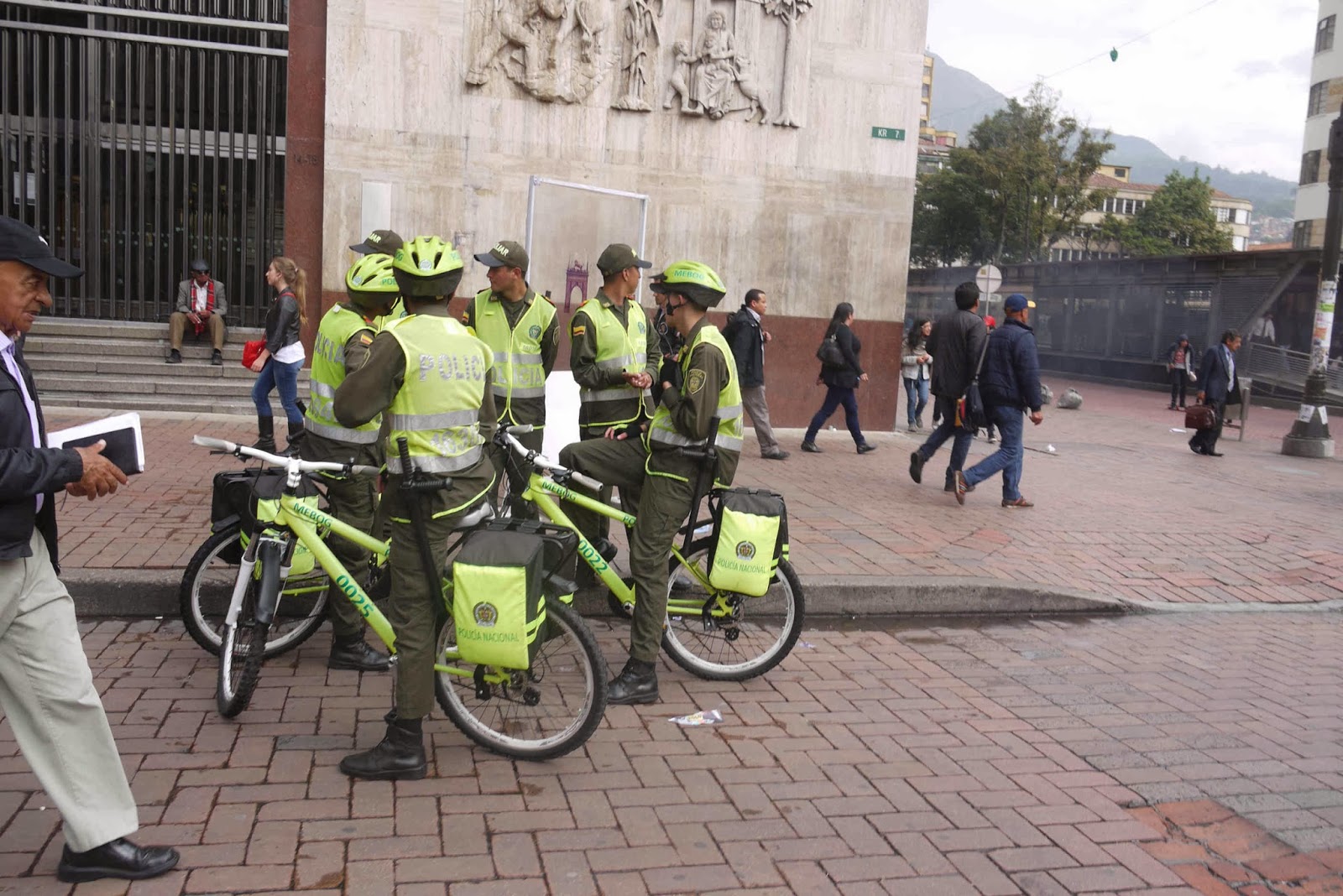 |
| Liberal party campaigners out pedaling. |
Last Thursday, Bogotá's 14th-annual Car-Free Day, Liberal Party campaigners turned out on bicycles. They even rented bikes from Bogotá Bike Tours. Hopefully, this was more than just P.R., and the Liberales really support clean, human-powered transportation.

However, the very next day, these Liberal Party campaigers (albeit for different candidates) marched down Ave. Septima wearing shirts demanding a "fair price" for gasoline. The shirts showed a customer being held up with a gasoline pump nozzle wielded like a pistol.
Cheaper gasoline promotes more driving, pollution, traffic congestion and sedentarism - all of which are bad for bicyclists, of course.
 |
Liberal Party members beat the
drum for cheaper gasoline. |
Subsidizing gasoline is also a give-away primarily to the wealthier clases, who own big cars, while the poor walk, bike or take the bus. Money spent - or taxes lost - on gasoline also means less resources for schools, police and public hospitals.
Why are gasoline prices such a populist issue? Venezuela's 'revolutionary, socialist' presidents, who love to criticize the United States for consumerism and wastefulness, subsidize gasoline there to just a few cents per gallon. Why don't I ever see marchers demanding lower prices on bread, carrots, books or potatoes?
By Mike Ceaser, of
Bogotá Bike Tours































